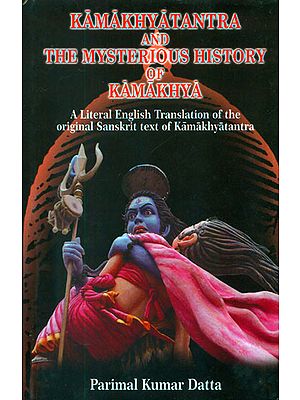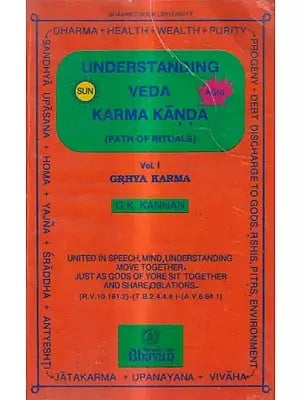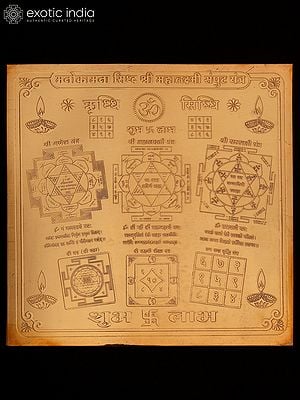Life and Times of Two Sikhandis in the Mirror of History
| Specifications |
| Publisher: Motilal Banarsidass | |
| Author Manisha S. Agnihotri | |
| Language: English | |
| Pages: 190 (Black & White Illustrations) | |
| Cover: HARDCOVER | |
| 8.5x5.5 inch | |
| Weight 330 gm | |
| Edition: 2025 | |
| ISBN: 9788120843677 | |
| HBE489 |
| Delivery and Return Policies |
| Ships in 1-3 days | |
| Returns and Exchanges accepted within 7 days | |
| Free Delivery |
The present anthology offers a critical and comprehensive view of the history of the two namesakes called Sikhandis, the chief central characters - both portrayed differently, the one in the epic Mahabharata on the one hand and the other in the Rudrayanavadana section of the Divyavadana on the other hand. It has been said that the Mahabharata narrative of Sikhandi does not give cent percent correct picture of the events and episodes, nor does it follow a foolproof safe methodology in delineating the narrative. Further, there is great difficulty in accepting Sikhandi of the Mahabharata as great historical character. Similarly the descriptions related to Sikhandi of Rudrayanavadana are not mentioned in other historical records although one comes across the depiction of events and episodes of Sikhandi and his entourage in the panels of Borobudur monument, in Java, Indonesia. This makes the entire narrative and its characters marvellous, realistic and lively.
In order to ascertain the historicity of both Sikhandis and their kingdoms, the crux of the narrative in respect of both has been examined and tested on the touchstone of archaeological cultures - PGW and NBPW. A faithful attempt has been made to reconcile the data to the maximum.
MANISHA S. AGNIHOTRI is a Professor of History at Janki Devi Memorial college, University of Delhi. Actively engaged in research, she has contributed research papers to the Indian History Congress, UGC care listed Journals, edited books/volumes and a Chapter in the text book on European History published by Delhi University. Her wide and deep research interests include Medieval Indian History, Religious Thoughts and Practices in Early Medieval and Medieval India, Gender and Trans-Gender studies and various ancient Indian literary and archaeological issues. She also has interest in the Contemporary World in general and Contemporary India in particular.
The present anthology entitled "Life and Times of Two T Sikhandis in the Mirror of History" is essentially an outcome of a critical and comprehensive rigorous study of a central common character Sikhandi differently portrayed both in the narratives of different Parvas of the Mahabharata (400 В.С. 400 A.D.) and also in the Rudrayanavadana section of the Divyavadana, a compilation of disparate Buddhist legends around the fourth century of the Christian era.
It is noteworthy to mention that before this the keynote theme in its rudimentary form was published in two different research papers in the Journal of the Ganganath Jha Campus, Prayagraj, in March, 2021.
In fact the Avadanas are generally a genre of compositions of the great, glorious and sublime acts and achievements of the Buddhist luminaries. There are many Avadanas, like Avadana Sataka, Asokavadana, Kusavadana and Mandhatavadana dealing with such themes.
The present text Divyavadana itself consists of thirty eight such Avadanas, out of which, we have chosen " Rudrayanavadana for our study, as it describes the life and career of another Sikhandi, who was incorrectly, but popularly known as the son of Rudrayana and Chandraprabha, respectively, the King and Queen of Roruka, who later became Buddhist monk and nun. They pened to be neighbouring contemporary rulers of the time of Bimbisara of Rajagṛha and Gautam Buddha during the Sixth Century B.C.E. In this way, the narratives recording events, anecdotes and episodes in them may chronologically belong to different periods of the ancient past. Thus, Sikhandi, the son of Drupada, the King of the Panchala Kingdom, located in Bareilly and Rampur Districts with its ancient capitals Ahichchhatra and later at Kampilya situated and identifiable with modern Kampil in Farukhabad District of Uttar Pradesh, on the one hand, is placed in company of many legendary figures such as Krsna, Parasurama, Bhisma, the Pandavas and others, during the four phases of his life, and may be assigned to a time prior to 3102 B.C.E. according to the calculation of the termination of the Bharata war, or are deemed coeval with the use of the Painted Grey ware culture circa 900-600 B.C.E. Hastinapur (now in Mawana subdivision of Meerut District), said to be the ancient capital of the Pandavas has also yielded Painted Grey Ware pottery of this period, i.e. 900-600 B.C.E.
Similarly, on the other hand, the narrative of the Rudrayanavadana may be historically assigned to the Sixth Century B.C.E. to which Mahatma Buddha (circa 567-486 B.C.E) and Bimbisara (circa 544 B.C.E to 493 B.C.E), the contemporaries of Rudrayana and his son Sikhandi belonged. Thus, there appears to be a huge, yawning gap, say of about 2500 years, or so in the times of the two Sikhandis, the two central characters as described in two sources.
Despite this big hiatus of time and space in the performance of their roles, there are certain commonalities too between the two narratives. This can be looked into their names and also in the choice of the conceptual framework of their belief in the former births, rebirth and retribution called Karma Vipaka, which determine the future course of the life of a person.
-
Q. What locations do you deliver to ?A. Exotic India delivers orders to all countries having diplomatic relations with India.
-
Q. Do you offer free shipping ?A. Exotic India offers free shipping on all orders of value of $30 USD or more.
-
Q. Can I return the book?A. All returns must be postmarked within seven (7) days of the delivery date. All returned items must be in new and unused condition, with all original tags and labels attached. To know more please view our return policy
-
Q. Do you offer express shipping ?A. Yes, we do have a chargeable express shipping facility available. You can select express shipping while checking out on the website.
-
Q. I accidentally entered wrong delivery address, can I change the address ?A. Delivery addresses can only be changed only incase the order has not been shipped yet. Incase of an address change, you can reach us at help@exoticindia.com
-
Q. How do I track my order ?A. You can track your orders simply entering your order number through here or through your past orders if you are signed in on the website.
-
Q. How can I cancel an order ?A. An order can only be cancelled if it has not been shipped. To cancel an order, kindly reach out to us through help@exoticindia.com.














































